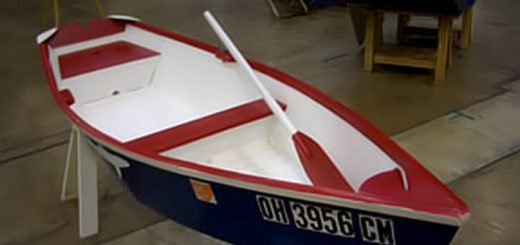Charged Up and Full of Life: The Care of Batteries
 Our November meeting guest speaker, Richard Price of Bulldog Battery, knows that nothing can kill the expectations of a fun day on the water faster than a dead battery in your car, truck or boat. But don’t overlook the pain from dead batteries in your radio, GPS, cellphone or flashlight. Those dead cells can reduce your margin of safety and possibly leave you in a condition you didn’t anticipate.
Our November meeting guest speaker, Richard Price of Bulldog Battery, knows that nothing can kill the expectations of a fun day on the water faster than a dead battery in your car, truck or boat. But don’t overlook the pain from dead batteries in your radio, GPS, cellphone or flashlight. Those dead cells can reduce your margin of safety and possibly leave you in a condition you didn’t anticipate.
A little understanding of battery types can help you better handle these power sources. Rich explained that rechargeable batteries can be divided into two groups: starter batteries and deep cycle batteries. Starter batteries used in vehicles such as cars, trucks, motorcycles, and boat engines are designed for maximum power output over a short period of time. The fractional amount of energy drained to start the engine is replaced through the alternator charging system. This type of battery is not designed to be fully drained down and recharged but rather to be topped off after every partial use. Most of these batteries will last 60 months; some marketed for longer life are the same battery guts dressed up with a better warranty.
 A starter battery that has been drained down – possibly by leaving the lights on overnight – should not be left in a discharged state. Discharged, a battery can begin sulfination, a chemically destructive process. To prevent sulfination and properly restore a fully discharged starter battery, put the battery on a battery charger. A slow trickle charge is best since it keeps the battery temperature low during charging. Heat build-up can be destructive since heat can warp plates causing them to short out. The effort to recharge the battery in this manner is rewarded by longer battery life.
A starter battery that has been drained down – possibly by leaving the lights on overnight – should not be left in a discharged state. Discharged, a battery can begin sulfination, a chemically destructive process. To prevent sulfination and properly restore a fully discharged starter battery, put the battery on a battery charger. A slow trickle charge is best since it keeps the battery temperature low during charging. Heat build-up can be destructive since heat can warp plates causing them to short out. The effort to recharge the battery in this manner is rewarded by longer battery life.
As a battery recharges, hydrogen gas is released and the pressure build up can distort the battery case. A check valve in the battery vents hydrogen to the atmosphere to reduce pressure. In a confined space and in the presence of a spark, the vented hydrogen can be an explosion hazard.
 The second major group of rechargeables, deep cycle batteries, are designed to be drained al the way down and recharged repeatedly, taking 200 to 1,000 recharge cycles. Some deep cycle batteries are of absorbed glass mat (AGM) construction. These use a gel electrolyte that eliminates the release of hydrogen during recharging. This is the battery to use in a confined space where the hazard of a hydrogen explosion would be consequential.
The second major group of rechargeables, deep cycle batteries, are designed to be drained al the way down and recharged repeatedly, taking 200 to 1,000 recharge cycles. Some deep cycle batteries are of absorbed glass mat (AGM) construction. These use a gel electrolyte that eliminates the release of hydrogen during recharging. This is the battery to use in a confined space where the hazard of a hydrogen explosion would be consequential.
Here is a link to more information on deep cycle batteries: http://www.relionbattery.com/
 To keep batteries in top condition in occasionally used boats and vehicles, Rich recommends using a battery tender. This device connects the battery to a charger. It constantly monitors the inactive battery and recharges it automatically as needed. The pay-off is a fully charged battery whenever you are ready to roll.
To keep batteries in top condition in occasionally used boats and vehicles, Rich recommends using a battery tender. This device connects the battery to a charger. It constantly monitors the inactive battery and recharges it automatically as needed. The pay-off is a fully charged battery whenever you are ready to roll.
If you can’t use a battery tender, the next best approach to keeping your batteries healthy in the off-season on the shores of Lake Erie is to use a Christmas/Easter recharge schedule. Fully charge the battery at fall lay-up and then again at Christmas and Easter. Top it off prior to spring launch day and the battery should provide excellent service. If the battery needs water use distilled water. Tap water can be used in a pinch. Always be sure the plates are covered.
 Rich discussed tool batteries such as ni-cads and lithium ions. Ni-cads, nickel-cadmium batteries, are the most durable, capable of 1,000 recharge cycles. Like a dog, they need to be exercised, drained down, used and recharged. A ni-cad cell puts out 1.2 volts. A tool battery pack may contain multiple ni-cad cells wired together to create the higher voltage required by the tool.
Rich discussed tool batteries such as ni-cads and lithium ions. Ni-cads, nickel-cadmium batteries, are the most durable, capable of 1,000 recharge cycles. Like a dog, they need to be exercised, drained down, used and recharged. A ni-cad cell puts out 1.2 volts. A tool battery pack may contain multiple ni-cad cells wired together to create the higher voltage required by the tool.
Lithium ion batteries put out 3.6 volts per cell. Tied together they can make make higher voltages possible within a small battery footprint. The batteries are capable of 300 recharge cycles and must be very carefully monitored during the recharge process to prevent a fire or explosion hazard.
One dead cell in your power tool battery pack can destroy its effectiveness. Rich’s shop can rebuild a problem battery pack with new cells, often at a lower cost than the tool manufacturer’s replacement unit.
Rich is eager to address your battery questions. Call him at 440-942-2555 or send him an e-mail through his website, bulldogbattery.com.
A specialist like Rich is a great resource in our community and his shop is a great place to get your boat, vehicle or electronic device fitted out with the best in battery technology. When your personal schedule and the weather come together for some time on the water, Rich wants no battery to get in the way of you and your fun.







